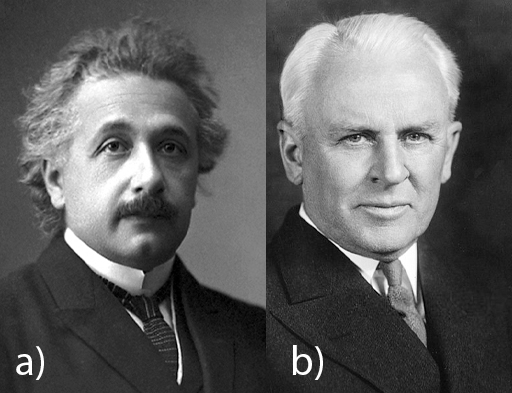1 The gaps in classical physics
In the late 19th century, it started to seem as if the fundamental laws of physical science had all been established. These laws constitute what’s now referred to as ‘classical physics’. However, there were a few early warning signs that classical physics may not yet cover everything.
James Clerk Maxwell, whose contributions to the theory of electrodynamics and the kinetic gas theory are among the pillars of classical physics, was one of the first scientists to observe a discrepancy that classical physics failed to explain. The discrepancy – which concerned the specific heat of gases (like oxygen or nitrogen) – deviated from the predictions of kinetic gas theory. Maxwell famously said in a lecture:
I have now put before you what I consider to be the greatest difficulty yet encountered by the molecular theory.
Another important experimental observation that defied classical physics was the photoelectric effect, which was studied by Heinrich Hertz in 1887. The photoelectric effect is the emission of electrons when light hits a material. Experiments showed that low-frequency (low-energy) visible light would not lead to the emission of electrons, no matter how intense the irradiation, while ultraviolet (high-energy) light would. Classical physics could not explain this behaviour.
In 1905, Albert Einstein proposed an explanation of the photoelectric effect. He employed a concept that was first put forward by Max Planck, which assumed that light consisted of tiny bundles of energy (quanta). While his work at the time was not immediately recognised by the community, it is now considered as a key step in the development of a new kind of theory – ‘quantum mechanics’ or ‘quantum theory’ – that describes nature at the atomic and subatomic scale. Experiments carried out in 1914 by Robert Millikan provided support for Einstein’s model, and in 1921 Einstein was awarded the Nobel Prize in Physics ‘for his services to theoretical physics, and especially for his discovery of the law of the photoelectric effect’. Within the decade, quantum theory would be fully established and become the standard theory of atomic physics.
Quantum theory explains our observations in the world of atoms and subatomic particles, but aspects of the theory’s interpretation have led to challenging discussions among scientists, which continue to this day. In a ‘classical world’ (which means the world of macroscopic objects that are much larger than atoms), things can become predictable. Think back to Week 1: if you know enough about the initial configuration of a system – like the positions and velocities of particles and their interactions – you can predict the future using the classical equations of motion. The date of the next solar eclipse and where it will be visible on Earth can be calculated with absolute precision. In a quantum world, certainty is replaced by probability, and we can only predict the probabilities of various outcomes of experiments. Many scientists are struggling with this idea and its implications, particularly with the question of when the subatomic world of probability crosses over into the macroscopic world of certainty. This scepticism is captured in Einstein’s reaction in a 1926 letter to Max Born, who had championed the probabilistic interpretation of quantum theory:
The theory says a lot, but does not really bring us any closer to the secret of the ‘old one’. I, at any rate, am convinced that He does not throw dice.
The famous physicist Richard Feynman wryly stated in a 1964 lecture:
I think I can safely say that nobody understands quantum mechanics.
Nevertheless, quantum theory has been extremely successful, and the probabilistic interpretation has generally been accepted. However, it puts clear and fundamental limits on what we can possibly know about any quantum system.

